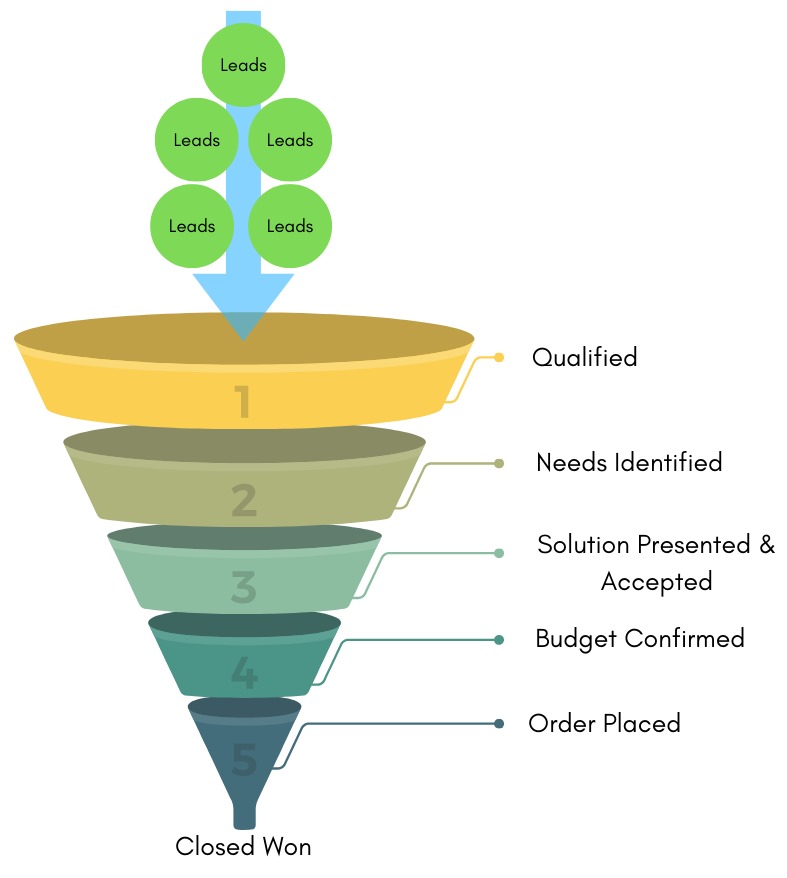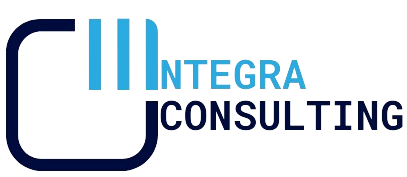
In the complex world of B2B sales, the concept of a "sales funnel" is a foundational framework for understanding how potential customers move from initial interest to final purchase. The B2B sales funnel is a model that visually represents each stage of the buyer's journey, helping companies visualize the steps needed to turn leads into customers. This structured approach to managing sales is crucial for ensuring a consistent, strategic approach to converting prospects, guiding them smoothly through each decision-making phase, and ultimately maximizing revenue and customer satisfaction.
The B2B sales funnel typically comprises five main stages: Qualified, Needs Identified & Accepted, Value/Solution Presented & Accepted, Price/Budget Confirmed, and Order Placed. First, in the Qualified stage, sales teams determine whether a lead has the potential to convert into a paying customer based on criteria such as industry fit and budget availability. Next, the Needs Identified & Accepted stage requires a thorough understanding of the customer's pain points and confirmation that the need is genuine. In the Value/Solution Presented & Accepted stage, the sales team showcases the product or service's unique value, seeking the client’s acceptance of the solution as viable. In the Price/Budget Confirmed stage, sales confirm the pricing and the client’s budget alignment. Finally, Order Placed marks the completion of the sales process with a formal purchase agreement, solidifying the relationship with the client.

Figure 1. Representation of Sales Funnel.
As B2B prospects move through these funnel stages, presenting customer evidence—such as case studies, testimonials, and product demos—aligned with each stage is essential. At the Qualified stage, general testimonials and basic product knowledge are effective. At the Needs Identified & Accepted stage, more specific case studies can illustrate how your solution addresses similar needs. When presenting the Value/Solution, detailed demos and industry-specific success stories can validate the solution’s worth. During the Price/Budget Confirmed phase, ROI evidence and data-backed testimonials can reassure clients about their investment. Finally, after Order Placed, showcasing similar customer success stories reinforces the value, contributing to longer-term customer retention.
Key metrics for managing a B2B sales funnel include Funnel Size, Funnel Addition, and Win Rate. Funnel Size refers to the total value of opportunities in the funnel at any given time, providing insight into potential revenue. Funnel Addition captures the rate of new opportunities entering the funnel, indicating how effectively lead generation is working. Finally, Win Rate measures the percentage of opportunities that close successfully, helping sales teams identify areas of strength and improvement. Tracking these metrics ensures that the sales team is focused, allowing for adjustments to optimize conversion rates and overall sales performance.
An effective sales funnel should be supported by an Opportunity Plan—a strategic document that evaluates and reviews each opportunity as it enters the funnel. This plan outlines a clear strategy and tactical steps needed to win the opportunity, detailing actions for understanding customer pain points, engaging stakeholders, and differentiating from competitors. By documenting strategies and tactics in this way, companies can ensure a systematic approach to every potential deal, increasing the likelihood of conversion and maintaining momentum across the funnel.
